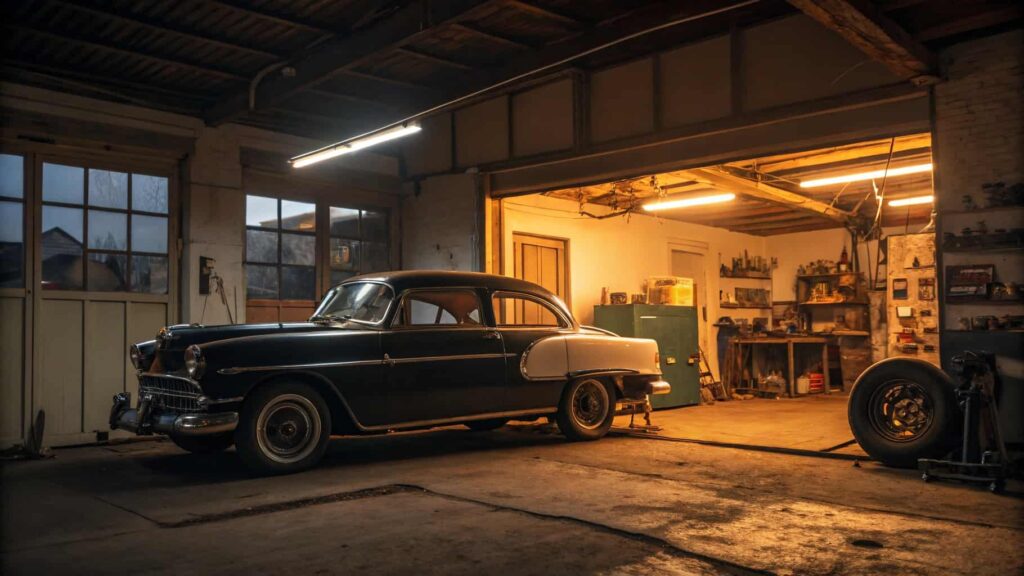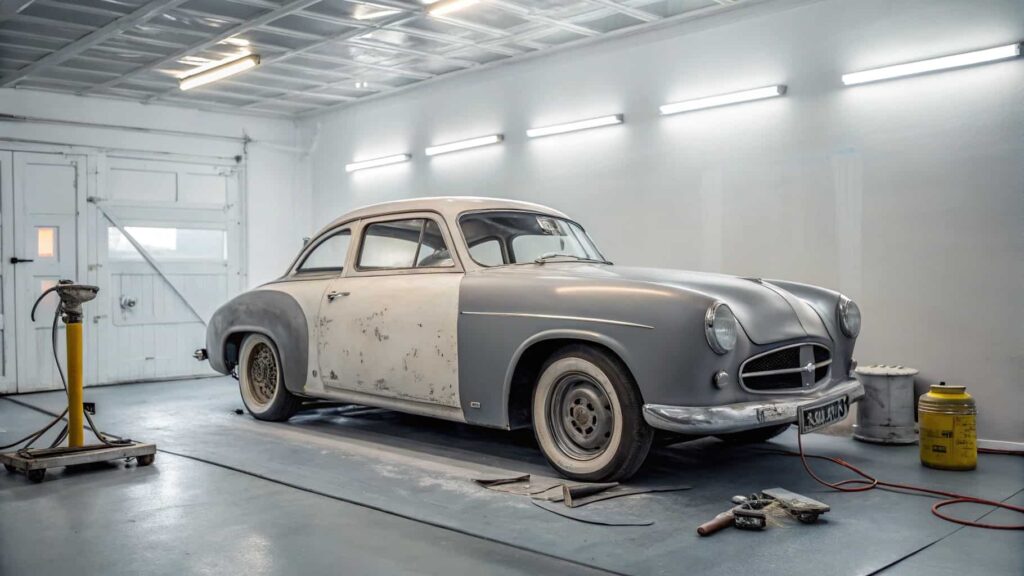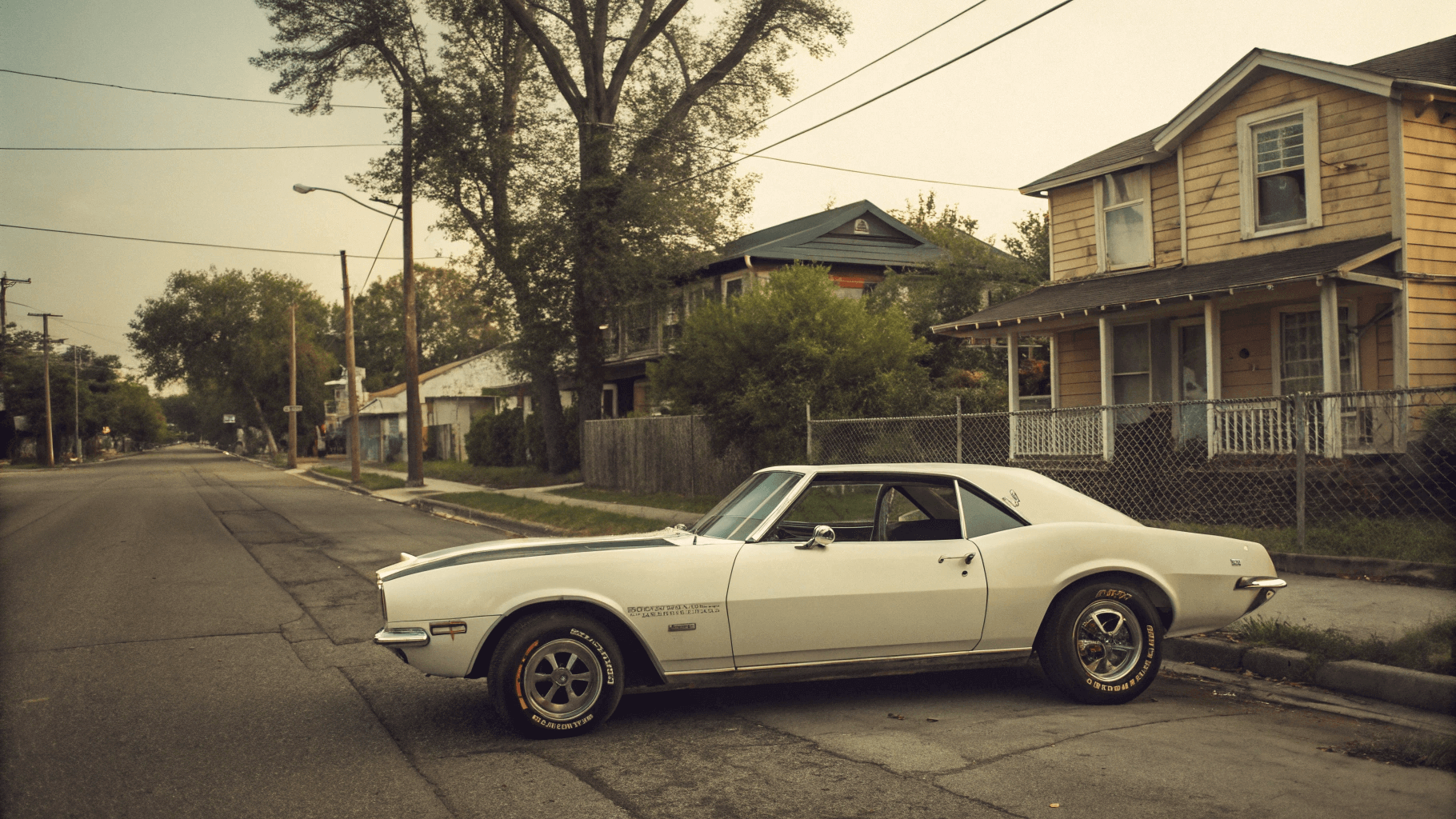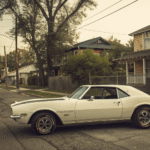Now Reading: Classic Car Restoration: How to Stay on Budget
-
01
Classic Car Restoration: How to Stay on Budget
Classic Car Restoration: How to Stay on Budget
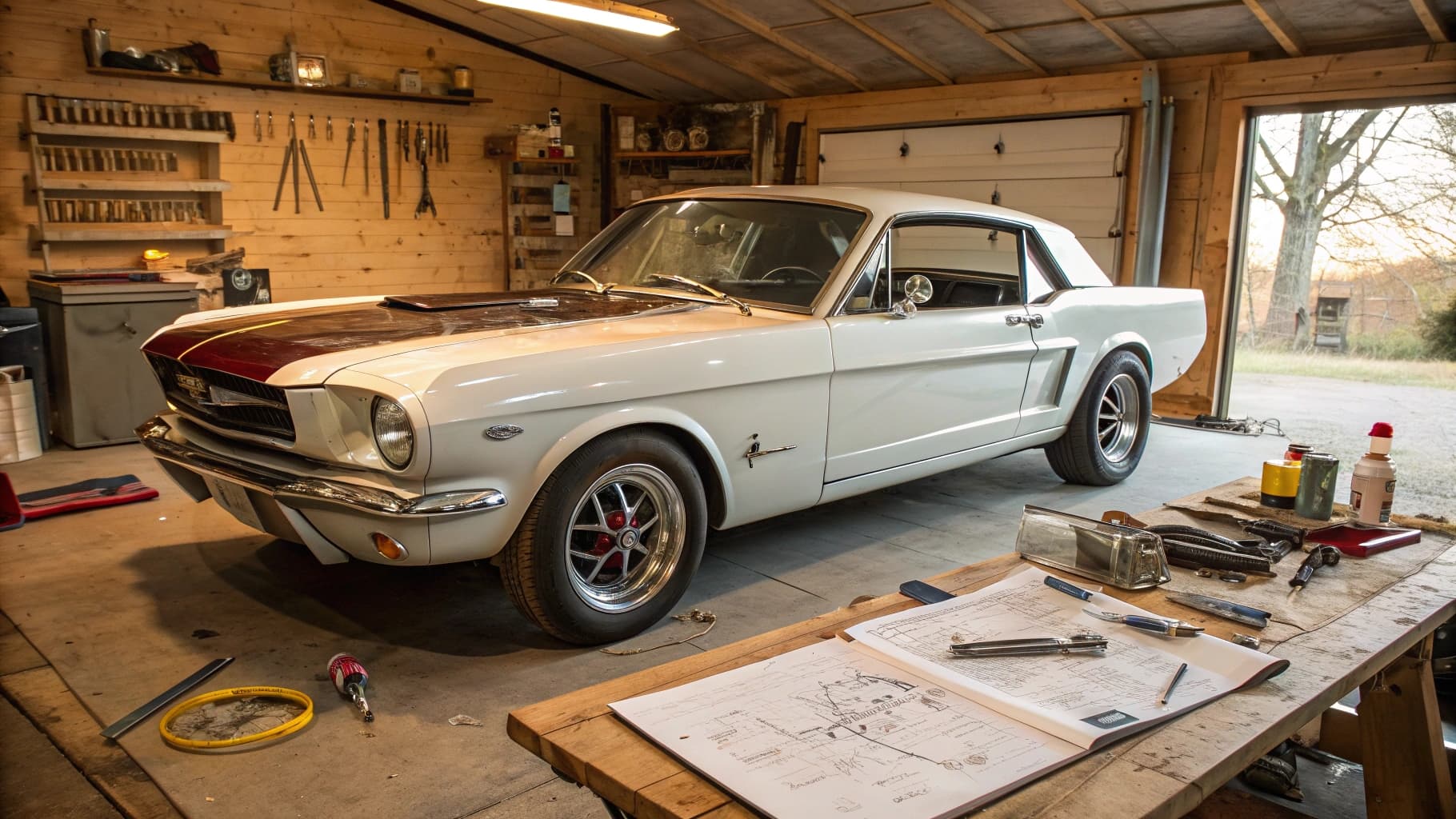
Budget classic car restoration is more than just a weekend hobby—it’s a rewarding journey that combines passion, patience, and practical know-how. For many enthusiasts, bringing a vintage vehicle back to life offers a unique blend of nostalgia and craftsmanship. But without careful planning, the costs can quickly climb out of control. Whether you’re restoring a beloved family heirloom or chasing a lifelong dream, understanding the basics is essential to stay on track financially and mechanically.
This guide is designed to help beginners and budget-conscious restorers navigate the essential steps of classic car restoration. From setting realistic goals and choosing the right car, to sourcing affordable parts and knowing when to hire professional help, we’ll walk you through every stage of the process. You’ll learn how to assess a vehicle’s condition, avoid common pitfalls, and make smart decisions that save time and money.
Restoring a classic car doesn’t have to mean emptying your wallet. With the right approach, it’s entirely possible to complete a quality restoration on a budget. By focusing on essential repairs, doing what you can yourself, and staying organized, you can enjoy the satisfaction of watching your classic come back to life—without breaking the bank.
So if you’re ready to roll up your sleeves, let’s dive into the world of budget classic car restoration and get your project started on the right foot.
Understanding the Basics of Budget Classic Car Restoration
Restoring a classic car can be an exciting journey, but without a solid plan, costs can spiral out of control quickly. Understanding the basics is essential to keep your project on track and within budget. Let’s break down the fundamental steps to get you started.
Defining Your Restoration Goals
Before you dive into the nuts and bolts, take a moment to define what you want to achieve with your restoration. Are you aiming for a showroom-quality finish, or are you simply looking to get the car running and roadworthy? Here are some questions to guide you:
- What is the primary purpose of the restoration? (e.g., personal enjoyment, resale, show)
- Is authenticity a priority, or are you open to modern upgrades?
- How much time are you willing to invest in the project?
Assessing the Initial Condition of the Car
Before you start ordering parts, you need to assess what you’re working with. Conduct a thorough inspection to understand the car’s current condition. Look for:
- Structural integrity: Check for rust, especially on the frame and undercarriage.
- Mechanical health: Is the engine running? What about the transmission and brakes?
- Cosmetic issues: Examine the paint, interior, and trim for wear and tear.
Setting a Realistic Budget
Once you know what you want and what you’re dealing with, it’s time to set a budget. Be realistic about what you can afford and prioritize spending on essential repairs. Consider these steps:
- Research the cost of parts and labor for your specific model.
- Allocate funds for unexpected expenses—because they will happen.
- Decide which tasks you can handle yourself to save money.
By understanding your goals, assessing the car’s condition, and setting a realistic budget, you’ll lay a solid foundation for a successful restoration project. Take it step by step, and you’ll be cruising in your classic beauty without breaking the bank.
Choosing the Right Classic Car for Restoration

Evaluating Potential Cars
When you’re on the hunt for a classic car to restore, it’s easy to get swept up in the romance of it all. But keeping a level head is crucial. Start by making a list of potential candidates. Consider factors like availability of parts, the car’s historical significance, and your personal preference. You don’t want to end up with a car that’s impossible to find parts for or one that’s going to be a money pit. Look for cars with a solid frame and minimal rust. A running engine is a huge plus, even if it’s not in perfect condition.
Avoiding Common Pitfalls
The excitement of buying a classic car can sometimes cloud judgment. Be wary of cars that are advertised as “easy fixes”. Often, sellers might say, “It just needs a little work,” but that “little work” can turn into a major project. Avoid cars with severe rust or frame damage unless you’re prepared for a significant investment in repairs. Remember, what seems like a bargain might end up costing you more in the long run.
Considering Long-Term Value
Think about the long-term value of the car you’re considering. Some classic cars appreciate in value, while others don’t. Research the market trends for the specific model you’re interested in. Check out car auctions, forums, and talk to other classic car enthusiasts. This will give you a sense of which models are likely to increase in value. Also, consider if you plan to keep the car or sell it after restoration. This will influence how much you’re willing to invest initially. Ultimately, choose a car that not only fits your budget but also your long-term goals.
Planning Your Restoration Project
Creating a Detailed Timeline
Alright, so you’re diving into this classic car restoration project, and it’s easy to get lost in all the excitement. But trust me, having a timeline is a lifesaver. Start by breaking down the entire project into smaller tasks. Think about how long each part will take and jot it down. It’s crucial to be realistic here. If you underestimate the time, you’ll end up frustrated. Also, leave some wiggle room for unexpected hiccups—you know they’ll happen. Use a calendar or a project management app to keep track of everything.
Organizing Your Workspace
Next, let’s talk about your workspace. You’re going to need a spot that’s not only big enough for your car but also has room for all your tools and parts. A cluttered space can slow you down and make you lose stuff. Set up shelves or pegboards for tools, and have bins for parts. Label everything. Seriously, you’ll thank yourself later when you don’t have to hunt for that one bolt that seems to have vanished into thin air.
Building a Comprehensive Parts List
Before you start tearing things apart, make a complete list of all the parts you’ll need. This includes everything from major components to the smallest screws. Check the car’s manual or online resources for specifics. Once you have your list, see what you can salvage from the car, what you’ll need to buy new, and what you can get away with buying used or aftermarket. Remember, having a detailed parts list helps you stick to your budget and avoid impulse buys. Consider creating a spreadsheet to track prices and sources for each part. This way, you can compare options and find the best deals.
Sourcing Affordable Parts and Materials
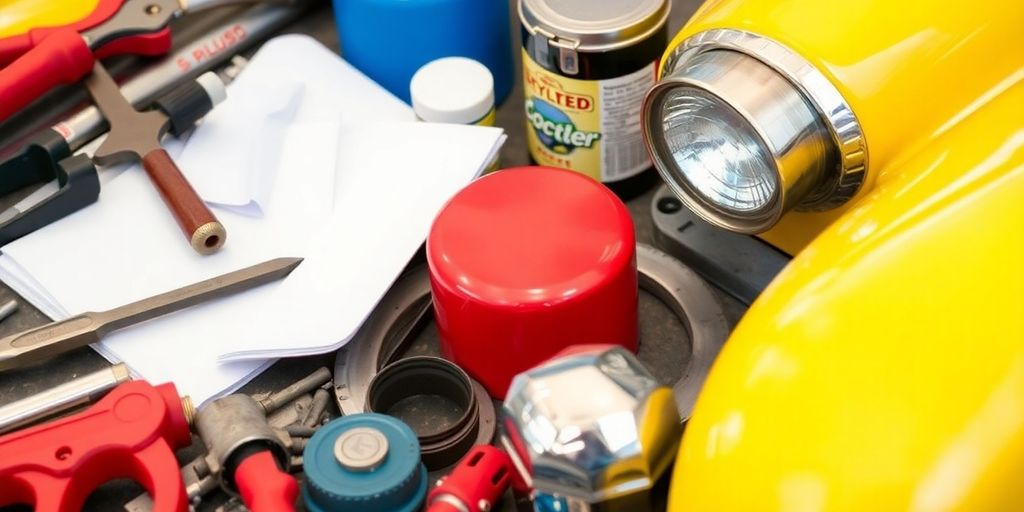
Restoring a classic car on a budget can be tricky, but with some smart sourcing, you can find the parts and materials you need without breaking the bank. Here’s how you can do it:
Exploring Used and Aftermarket Options
When it comes to finding parts, buying used or aftermarket can save you a lot of money. Used parts can often be found at local junkyards or salvage yards. These places are treasure troves for car enthusiasts. You can also check out online platforms like eBay or Facebook Marketplace. People often sell parts they no longer need, and you might snag a great deal. Don’t forget about aftermarket parts either. They can be cheaper than OEM parts and sometimes even perform better. Just make sure they fit your car’s specifications.
Utilizing Online Marketplaces
Online marketplaces are your best friend when hunting for car parts. Websites like Craigslist and eBay are full of listings for everything you might need. It might take some time to sift through the listings, but patience pays off. Often, sellers are open to negotiation, so don’t hesitate to make an offer. You might just get what you need at a fraction of the cost. Plus, keep an eye out for seasonal sales and discount codes. Signing up for mailing lists can alert you to upcoming deals.
Negotiating with Suppliers
Building a relationship with suppliers can be beneficial. If you find a supplier you trust, see if they’re willing to negotiate on price, especially if you’re buying in bulk. Sometimes, just asking for a discount can lead to savings. Don’t be shy about haggling – it’s a common practice in the car restoration community. Also, consider trading parts you don’t need for ones you do. It’s a win-win situation and helps keep costs down.
By exploring these avenues, you can source the parts and materials you need without blowing your budget. Remember, every dollar saved on parts is a dollar you can spend on other aspects of your restoration project.
DIY vs Professional Help: Making the Right Choice
Identifying Tasks You Can Do Yourself
Getting hands-on with your classic car restoration can be incredibly rewarding, but it’s important to know your limits. Start by assessing your skills and the tools you have available. Are you comfortable with basic mechanical tasks like changing oil or replacing spark plugs? If so, you might handle these jobs yourself. For tasks like sanding the body or cleaning parts, your time and effort can save you money compared to hiring a pro.
Hiring Professionals for Complex Jobs
Some jobs are best left to those with the right expertise. Engine rebuilds, transmission overhauls, or intricate electrical work often require specialized knowledge and equipment. Hiring a professional can prevent costly mistakes and ensure the job is done right the first time. It’s wise to get quotes from a few different shops to compare prices and services.
Balancing Cost and Quality
Finding the right balance between DIY and professional help is key to staying on budget. Make a list of tasks you feel confident doing and those that might need a pro’s touch. Consider the cost of tools you’d need to buy versus the cost of hiring someone. Sometimes, investing in a professional can actually save money in the long run by avoiding errors that might require even more expensive fixes.
Managing Your Restoration Budget Effectively
Tracking Expenses and Receipts
Keeping a close watch on your spending is key when restoring a classic car. Start by collecting all your receipts for parts, tools, and any professional services you use. A simple spreadsheet can help you track these expenses, making it easier to see where your money is going. This practice not only keeps you organized but also helps curb those impulsive buys that can bust your budget.
Adjusting Your Budget as Needed
No matter how well you plan, unexpected costs are bound to pop up. Whether it’s a part that needs replacing or a tool that breaks, you’ll need to be flexible with your budget. Set aside a contingency fund—about 20-30% of your total budget—to handle these surprises. If you find you’re consistently going over budget, it might be time to reassess your goals or search for more affordable alternatives.
Avoiding Impulse Purchases
Impulse buys can be a budget killer. Before making any purchase, ask yourself if it’s truly necessary for the current stage of your project. Make a list of “must-have” items versus “nice-to-have” ones, and stick to it. Remember, every dollar saved on unnecessary items can be used for essential repairs or upgrades. Patience and discipline will keep your restoration on track financially.
Cost-Saving Tips for Classic Car Restoration
Using Coupons and Sales
When you’re set on buying new parts, don’t just settle for the first price you see. Hunting for deals online can save you a bundle. Sign up for newsletters from car part retailers to get access to exclusive discounts and seasonal sales. Holidays are prime time for sales, so keep an eye out for those too. Free shipping on heavy parts can also cut down costs significantly. Always check the return policies of online stores; sometimes, they offer store credit even if you can’t get cash back.
Selling Unused Parts
As you strip down your classic car, you’ll likely end up with parts you don’t need. Instead of letting them gather dust, sell them online. Platforms like eBay or Facebook Marketplace are great for this. Price your items to sell quickly—this isn’t about making a profit, but about recouping some of your spending. If you’ve bought parts you ended up not using, look into returning them or selling them as well.
Performing Pre-Tasks Yourself
You might not be a professional mechanic, but there are plenty of tasks you can handle yourself to save money. Prepping the car for paint, like sanding and filling dents, is a good example. YouTube tutorials and online forums can be your best friends here. Gauge each task by its complexity and your own skills. If something seems too tricky, leave it to the pros, but tackle the simpler jobs yourself to keep costs down.
Maintaining Quality While Staying on Budget
Prioritizing Essential Repairs
When restoring a classic car, it can be tempting to fix everything at once. However, focusing on essential repairs first is key to keeping costs down. Start with the mechanical aspects that ensure the car runs safely and reliably. Things like brakes, engine components, and suspension should be at the top of your list. Once these are sorted, you can move on to cosmetic issues. This way, the car is functional, and you can enjoy it even if it isn’t fully restored cosmetically.
Ensuring Safety and Reliability
Safety should never be compromised for the sake of budget. Always allocate funds for critical safety features such as seat belts, airbags (if applicable), and reliable tires. Check the wiring and lighting systems to avoid any electrical hazards. Remember, a car that looks good but isn’t safe to drive is just an expensive decoration.
Achieving Aesthetic Goals
When it comes to aesthetics, patience is your best friend. Look for deals on paint and upholstery materials, and consider doing some of the work yourself if you have the skills. You might not be able to afford a top-of-the-line paint job right away, but you can prep the car yourself to save on labor costs. Keep an eye out for sales on materials and don’t shy away from secondhand options. With a little creativity and effort, you can achieve a stunning look without breaking the bank.
Finalizing Your Classic Car Restoration
Conducting a Thorough Inspection
After all the hard work you’ve put into restoring your classic car, it’s time for a detailed inspection. This step is crucial to ensure everything is in top-notch condition. Start by checking all mechanical systems—engine, brakes, suspension, and electrical components. Make sure everything operates smoothly without any unusual noises or vibrations. Don’t forget the small details, like checking for leaks and ensuring all lights and signals function properly.
Documenting the Restoration Process
Keeping a detailed record of your restoration journey is not just about nostalgia; it adds value to your car. Document every step, from the initial condition to the final touches. Include photos, receipts, and notes about any modifications or repairs. This documentation will be invaluable if you decide to sell the car in the future or need to reference past work.
Preparing for Future Maintenance
Restoration doesn’t end when the car looks good and runs well. Plan for future maintenance to keep your classic car in prime condition. Create a maintenance schedule that includes regular checks and services. This might involve oil changes, tune-ups, and periodic inspections to catch any issues early. Remember, staying proactive with maintenance will help you enjoy your classic car for years to come without unexpected surprises.
Conclusion
Restoring a classic car on a budget might seem like a daunting task, but with a bit of planning and smart choices, it’s totally doable. Remember, it’s all about balancing your passion with practicality. Start by setting a realistic budget and sticking to it. Keep track of every penny spent, and don’t be afraid to get your hands dirty with some DIY work. Look for deals on parts, and consider used or aftermarket options to save some cash. It’s important to stay flexible and patient, as unexpected costs can pop up. But in the end, the satisfaction of seeing your classic beauty come back to life without breaking the bank is worth every effort. So, keep your goals clear, enjoy the process, and drive your dream car with pride.
Frequently Asked Questions
What is the first step in restoring a classic car on a budget?
Start by setting clear goals for your restoration project and decide what you want to achieve while keeping costs low.
How can I find affordable parts for my classic car?
Look for used or aftermarket parts online, at junkyards, or through car collector groups to save money.
Is it better to do the restoration work myself or hire a professional?
It depends on your skills. You can do simple tasks yourself but might need a professional for more complex jobs.
What should I consider when choosing a classic car to restore?
Check the car’s condition, especially for rust and missing parts, and make sure it runs to avoid expensive repairs.
How can I keep track of my spending during the restoration?
Keep all receipts and make a list of expenses to ensure you stay within your budget.
What are some cost-saving tips for classic car restoration?
Use coupons, shop during sales, and consider selling unused parts to save money.
How do I make sure the restoration is safe and reliable?
Focus on essential repairs that affect safety and reliability before cosmetic improvements.
What should I do once the restoration is complete?
Conduct a thorough inspection, document the process, and plan for future maintenance to keep your car in good shape.



